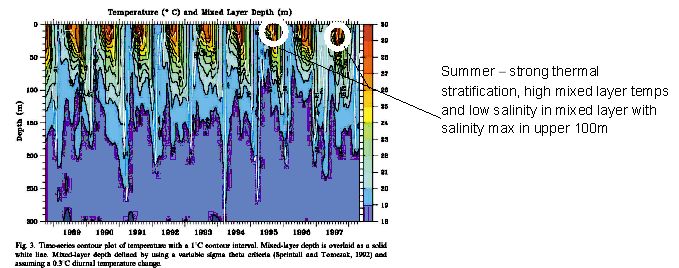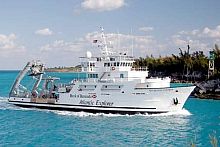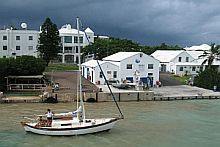BIOS - transforming marine science through research
|
The Bermuda Institute of Ocean Sciences (BIOS) was originally established in 1903 as the Bermuda Biological Station for Research, Inc.
As a US non-profit research and educational institution, BIOS's mission is threefold: to conduct research of the highest quality from the special perspective of a mid-ocean island, to educate future scientists, and to provide well-equipped facilities and responsive staff support for resident scientific staff, visiting scientists and students from all around the world.
BIOS aims to transform the fields of oceanography, marine science, and ocean health through a blend of cutting-edge research, comprehensive educational experiences and a commitment to share its knowledge internationally.
This is done by understanding the seasonal and interannual variations in ocean physics, chemistry and biology, the relationships between the external physical forcings and the biological rate processes, and the processes that determine sea surface pCO2, including thermodynamics, particle export and gas exchange. BIOS provides a testbed for the introduction and validation of new oceanographic tools and technologies.
Observations at BIOS were started in 1903. "Hydrostation S" (the longest running fixed point time series in the ocean) began in 1953 and is still going. During bi-weekly visits to the station, temperature, salinity and dissolved oxygen are collected at 24 depths from the surface to 2600 m. Sample spacing is 10-25 m in the upper 100 m and expands to a resolution of 200 m at depth.
Two predominant long-term oscillations in SST have been observed at ‘Hydrostation S’ since its inception. The noisy blue lines ( -) below are identical in both figures and are seasonally normalised SST anomalies. A lo-pass filter was run on these normalised anomalies to produce the overlying black lines ( -) which emphasise the longer term oscillations. (Taken from http://www.bios.edu/research/hydrodata.html)
 |
 |
The Bermuda Atlantic Time series study (JGOFS) started in 1988, focuses on the biogeochemical cycles in the Sargasso sea, measuring hydrographic, biological and chemical parameters throughout water column. The major focus is to asses the factors regulating the inset, decline and fate of the annual maximum in phytoplankton production know as spring bloom (accounts for ~50% of annual carbon fixation and export in the Sargasso sea). Another important focus is to understand the causes of seasonal and interannual variability in ocean biogeochemistry both at this site and as it may relate to the biogeochemistry of the rest of the ocean.
Bottom depth at the BATS deployment area is ~4680 m. The BATS core cruises consist of a single 4-5 day cruise at monthly intervals. Between January and April an extra "bloom cruise" is added to increase sampling frequency to bimonthly during the spring-bloom period. Additional "validation cruises" (2-4yr) resolve spatial variability of biogeochemical parameters near BATS.
On each core cruise a 400-m surface-tethered sediment trap array is deployed 9 km south of BATS (to avoid entanglement with the Bermuda Testbed Mooring). The array is allowed to drift for 3 days, and its location is monitored via an ARGOS/GPS transponder and ship relocation. Once the array is deployed, the ship proceeds to the BATS station to commence sampling. On each core cruise, CTD profiles and water collections are made at 36-48 depths during a series of 4-7 casts from the surface to 4200 m.
Continuous measurements of pressure, temperature, conductivity, dissolved oxygen, and fluorescence are taken. The continuous CTD data are calibrated by water collected in discrete Niskin bottle samples on the rosette.
The figure below shows the time-series contour plot of temperature with a 1oC contour interval. Mixed-layer depth is overlaid as a solid white line. Mixed-layer depth define by using a variable sigma theta criteria (Sprintall and Tomczak, 1992) and assuming a 0.3oC diurnal temperature change. Figure from Steinberg et al 2001.
 |
A number of key results arise from the BATS data:
- Mesoscale eddies are a significant physical feature in the quadrant of the Sargasso Sea where BATS samples
- Multi-year increase in CO2 concentrations in the surface ocean has now been conclusively documented
- Dissolved organic carbon (DOC) is now quantified as the largest exchangeable carbon pool in the ocean and at BATS has been shown to be a seasonally important carbon sequestration term
Links are visible between major biogeochemical parameters in the Sargasso Sea and low-frequency climate patterns, such as the El Niño-Southern Oscillation (ENSO) and North Atlantic Oscillation (NAO).
There are many other programs at BATS, the mooring testbed, the optical program, the air sea exchange program, etc. All of the data from the BATS program and many of the data from the "Hydrostation S" program are made available publicly over the internet and through the National Ocean Data Center (NODC). The public release of the data is generally within 24 months of collection and frequently much sooner. Data are placed in an anonymous ftp account (ftp.bbsr.edu) in a variety of file formats.
The BATS data also can be accessed via the World-Wide-Web by starting at the BATS home page and following the links to the BATS data repository.












